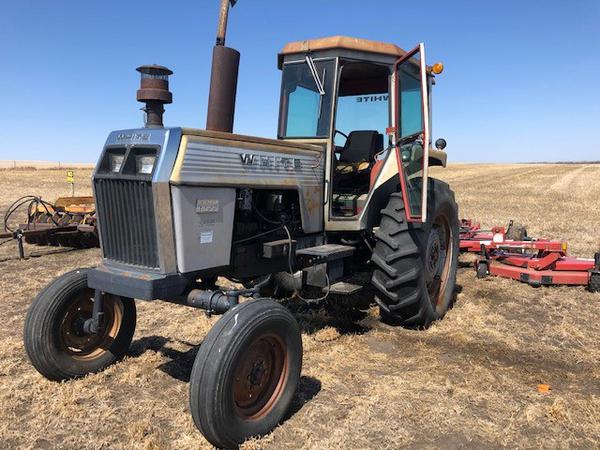Register an account with RME to store your favorite equipment and easily compare between units.
RegisterHow early is too early to get the combine ready? According to Steven Colbourne, Advanced Precision Support Specialist at Rocky Mountain Equipment (RME), it’s never too early. Once the sprayers are put away and the mini-summer breaks are wrapped up, it’s a great time to bring out the combine and start preparations.
Steven recommends a thorough, on-farm combine performance checklist so you make needed adjustments, order parts, or book service ahead of service.
Step 1: Start the Combine
Begin by operating the combine to check overall performance. Test each header and complete a function test. Here are a few:
- Is the header functioning and moving into the automatic height control?
- Are drapers turning at proper speed?
- Is the feeder house quiet and operational?
- Can the sieves and pre-sieves open smoothly?
We recommend operating the combine at full range of travel to see how it is running.
Step 2: Inspect the Combine Thoroughly
For a thorough inspection, Steven prefers to start from the front of the combine, and then work through to the back, and then move up to the cab.
Begin with the header:
- Are knife sections sharp? Guards in good shape?
- Are knife hold downs adjusted properly?
- Is the gearbox oil level sufficient?
- Are belts tight and in good condition?
Drapers: Check tension, condition, and look for holes or foreign materials like animal nests. Inspect bearings and joiners.
Feed Drums: Look at fingers and auger flightings. Ensure proper greasing and smooth movement. Perform a header height calibration.
Feeder House: Examine the feeder chain’s tension and wear. Inspect the rock trap or beater system. These can collect debris or house animals during storage.
Rotor & Threshing System:
- Confirm that the concaves open/close properly and are calibrated.
- Check if the pinch point needs adjustment. If it is not set properly along with the concave position, that means a loss of threshing efficiency.
- Check the wear on the concaves. If they are rounded or have rock damage, it may be time to replace them.
Cleaning System: We highly recommend spending extra time on the cleaning system. Modern combines have three-sieve assemblies. Make sure they move properly. When combines get older, the metal in the sieves will start to crack. That metal might end up with your grain and end up in the clean grain elevator or go out the back of the combine without you realizing. Use a flashlight to inspect thoroughly.
Chopper: Check knife sharpness and general condition. Sharp knives ensure that the straw is properly processed and chopped so that they end up in the field in a nice, even finish.
Grain Elevator:
- Inspect chains and belts for wear.
- Clean the moisture sensor of crop residue from last year.
- Wipe down the grain camera lens.
- Clear any buildup from the yield sensor.
Always ensure service doors and panels are securely closed before heading to the field.
Step 3: Prepare the Cab
Regardless of how long you’ve had the machine, spend time getting comfortable with the cab’s technology:
- Customize display screens for harvest.
- Confirm grower-farm-field hierarchy settings are up to date.
- Filter the crop list as needed.
Check the GPS and correction service subscription early to avoid last-minute issues. Ensure automation parameters are properly configured for the conditions. Your local RME Precision Support Specialist is ready to help set these up.
Step 4: Set Yourself Up for Success
Before you hit the fields, consider these tips:
- Practice a Kill Stall: Newer combines have a kill stall function to stop the engine allowing you to open up the command and take a snapshot of what the combine is doing at that particular time as it’s going through the field. A kill stall is the best diagnostic tool for combine performance issues and can help you get up and running again.
- Use a Bushel Plus System: This tool helps assess harvest loss and fine-tune combine settings. Ask your local RME abut integrating it into your setup.
Ready for Harvest Season
Harvest prep isn’t just about the machine; it’s a team effort. Your local RME Precision Support Specialists, Parts, and Service teams are here to ensure your combine runs at peak efficiency. Don’t wait–contact your local RME today to get ahead of the season.





